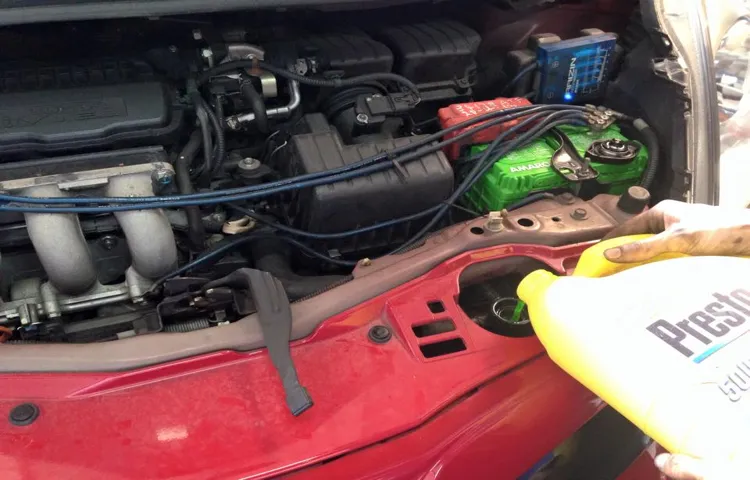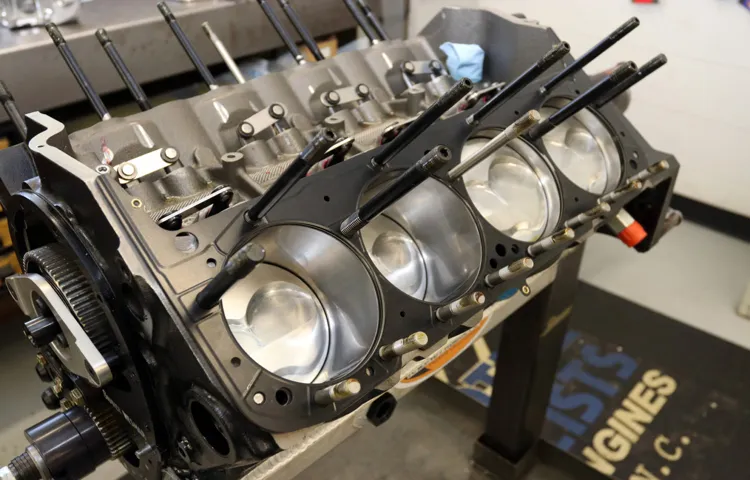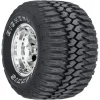Driving without coolant may seem like a minor thing, but it can cause a chain reaction of catastrophic events that can result in engine failure, breakdowns, and even accidents. Imagine running your car’s engine with no coolant for miles on end, the pistons banging against each other without lubrication, and the engine overheating beyond control. The results could be devastating, and you may end up stranded on the side of the road or worse still, in a collision.
Coolant is a crucial component of your car’s engine, keeping it at optimal operating temperatures and preventing it from overheating. It also lubricates the engine’s moving parts, preventing metal-metal contact that would cause premature wear and tear. But what happens when you drive without it? In this blog post, we’ll delve into the dangers of driving without coolant, revealing what can happen to your engine, the warning signs to look out for, and how to prevent a coolant-related breakdown.
We’ll also provide some tips on how to maintain your car’s cooling system, ensuring that your engine runs smoothly and reliably, even during the hottest summer months. So buckle up and let’s get started!
Table of Contents
What is Coolant?
Coolant is a liquid that helps regulate the temperature of an engine by absorbing heat generated from the combustion process. It is typically a mixture of water and antifreeze that is circulated through the engine block and radiator to keep the engine operating within its optimal temperature range. If you drive with no coolant, there is a high chance that your engine will overheat and potentially get damaged.
The lack of coolant means that the engine won’t be able to regulate its temperature, which can cause the engine block to crack, warp or suffer other types of damage that could prove costly to repair. If you notice that your engine is overheating, it’s important to stop driving as soon as possible and get the engine checked by a mechanic before you cause any further damage. In the long run, proper maintenance of coolant levels can save you thousands of dollars in engine repair costs and avoid the hassle of breaking down on the side of the road.
Definition and Purpose
Coolant is a liquid or gas that is circulated through a system to prevent overheating or freezing. In an internal combustion engine, coolant is used to absorb and transfer the heat generated by the combustion process away from the engine to the radiator. This keeps the engine operating at a safe temperature and prevents damage to the engine components.
Coolant also helps prevent the formation of rust and corrosion inside the engine and radiator. The purpose of coolant is to maintain the correct operating temperature of the engine, prevent corrosion and damage, and extend the life of the engine. It is vitally important to use the correct type and concentration of coolant in your vehicle to ensure proper engine function and prevent costly repairs.
So, if you want to keep your engine running smoothly, make sure you check and maintain the coolant regularly.

Why is Coolant Important?
Driving without coolant can cause serious damage to your car’s engine. Coolant, also known as antifreeze, is responsible for keeping the engine at a proper temperature by circulating through the radiator and engine block. Without coolant, the engine can quickly overheat, causing damage to internal components such as pistons, bearings, and cylinder walls.
In addition, overheating can warp the engine’s cylinder head or cause the head gasket to fail, leading to costly repairs. It’s important to regularly check your car’s coolant levels and maintain the proper mixture of coolant and water to ensure optimal performance and engine longevity. So don’t take coolant for granted and make sure to keep an eye on its levels to avoid damaging your car’s engine.
Coolant Keeps Engine Cool and Lubricated
Coolant is an essential element in keeping your engine running smoothly. It works by preventing the engine from overheating by absorbing the excess heat generated during the combustion process. But that’s not all- coolant also lubricates several engine parts to prevent them from wearing down prematurely.
This is incredibly important for your engine because without coolant, your engine would quickly overheat and shut down, putting you and your passengers at risk. A cooling system flush can help ensure that your coolant is always in top condition and performing at its best. So, if you want to avoid costly repairs and extend the life of your engine, make sure to keep up with your coolant maintenance!
What Happens When You Drive with No Coolant?
Driving with no coolant in your vehicle’s engine can be catastrophic. Coolant, also known as antifreeze, is responsible for regulating the temperature of your engine. Without it, your engine will quickly overheat and eventually seize up, resulting in a major engine failure.
Lack of coolant can cause extensive damage to your engine’s components, including the cylinder heads, pistons, and bearings. Not only will this result in expensive repairs, but it can also be dangerous if your engine suddenly shuts down in the middle of a drive. It’s essential to regularly check your coolant levels and have a mechanic inspect your cooling system to ensure it’s functioning correctly.
If you notice any warning signs such as steam coming from your engine or a temperature gauge that’s consistently running hot, stop driving immediately and seek professional help. Don’t risk damaging your engine or endangering your safety by neglecting this crucial component in your vehicle.
Engine Overheating
Overheating in engines is a common issue, and one of the main causes is the lack of coolant. Coolant is responsible for regulating the heat produced by the engine. Without it, the engine temperature increases rapidly, and the metal parts start to expand and warp.
If you drive with no coolant, it can cause damage to the engine, and you may start to hear strange sounds or notice steam coming from under the hood. Additionally, the engine may start to smell like burning rubber or oil, and it may even shut off completely. It’s important to check your coolant levels regularly and top it off if necessary.
Neglecting this could lead to costly repairs and even total engine failure. So, take care of your engine and keep your coolant levels in check to prevent any overheating issues.
Warped or Cracked Cylinder Head
Driving without coolant can lead to a warped or cracked cylinder head. The cylinder head is an integral part of the engine that covers and seals the top of the cylinders, forming part of the combustion chamber. It is responsible for ensuring the smooth operation of the engine by managing the flow of air and fuel.
However, if there is no coolant to regulate the engine’s temperature, the cylinder head may overheat and warp or even crack. While driving, you may notice warning signs that your engine is overheating, such as the temperature gauge rising or steam coming from the hood. At this point, it is essential to immediately pull over and let the engine cool down.
However, if there is no coolant in the engine, you run the risk of causing damage that can be costly to repair. Imagine a car engine as a human body, and the coolant as the circulatory system, responsible for carrying nutrients to the different organs. The cylinder head serves as the brain, regulating all the functions of the engine.
Without the right amount of coolant, the engine will not be able to cool down, much like how a human without the circulatory system would not be able to survive. To avoid the possibility of a warped or cracked cylinder head, it is imperative to check your coolant level and refill it if needed. Regular maintenance is key to ensure the longevity of your engine and prevent expensive repairs.
Remember to keep an eye on warning signs of overheating and never drive with an empty coolant reservoir. By taking these precautions, you can avoid the costly and frustrating experience of driving with a warped or cracked cylinder head.
Damaged Engine Block
Driving without coolant can cause severe damage to your engine block. Coolant regulates the temperature of your engine, preventing it from overheating and seizing up. When there is no coolant to circulate through the engine, the metal components start to heat up and expand.
Over time, this expansion can cause the engine block to crack or warp, leading to costly repairs or the need for a full engine replacement. Not only that, but driving without coolant can also damage other parts of your engine, such as the head gasket, pistons, and bearings. If you notice your engine temperature gauge rising or the warning light flashing, it’s essential to pull over immediately and check your coolant levels.
Neglecting this warning sign can result in irreversible damage to your vehicle’s engine and significant expenses to repair. So, before you hit the road, make sure your coolant levels are topped off and your engine is running smoothly, as prevention is always better than cure.
Can You Drive Without Coolant for a Short Distance?
Driving without coolant can be detrimental to your car’s health. Coolant, also known as antifreeze, plays a crucial role in regulating the temperature of your car’s engine. Without it, your engine overheats quickly, causing severe damage to internal components.
In the short term, you may be able to drive without coolant for a brief distance, but it’s never recommended. If you continue to drive with no coolant, you risk blowing a gasket, warping your engine’s components, and even destroying your engine entirely. Therefore, it’s always better to have enough coolant in your car and check its level regularly.
It is crucial to maintain your car and its systems to extend its lifespan and keep it running smoothly. So, if you notice anything unusual with your car’s temperature gauge or coolant level, it’s best to have it inspected by a professional immediately to avoid expensive repairs in the future.
Risks of Driving with No Coolant, Even for a Short Time
Driving without coolant, even for a short distance, can cause serious problems for your car. Coolant plays a crucial role in regulating the engine’s temperature, and without it, your car can overheat very quickly, which can lead to severe engine damage. The risk of overheating is higher in hot weather conditions, but it can happen even in mild temperatures.
It’s essential to understand that coolant doesn’t only provide the cooling effect. It also contains additives that protect the engine from corrosion, lubricating the water pump, and enhancing the boiling point. If you drive without coolant, you’re putting a lot of pressure on your engine, which can cause a lot of damage and lead to costly repairs.
It’s best not to take the risk and avoid driving without coolant. If you suspect any issues with your coolant levels, it’s best to get them fixed before hitting the road.
What to Do If You Drive with No Coolant?
If you drive with no coolant, your engine could suffer severe damage. Coolant, also known as antifreeze, helps regulate your engine’s temperature and prevents it from overheating. Without coolant, your engine could overheat, causing severe damage such as a cracked engine block or a blown head gasket.
If you suspect that you need to drive with no coolant, pull over to the side of the road immediately and turn your engine off. Driving your car with no coolant could lead to a complete engine failure, which could be costly to repair. It’s best to have your car towed to the nearest mechanic or service center to diagnose the issue and prevent any further damage.
Remember, preventative maintenance such as checking your coolant levels regularly could save you from costly repairs in the future.
Pull Over and Turn off the Engine
Driving with no coolant in your vehicle can be a serious problem. Not having enough coolant can lead to your engine overheating and causing significant damage. As soon as you realize there is an issue with your coolant, pull over and turn off the engine.
Continuing to drive with no coolant can lead to total engine failure. It’s essential to check the coolant level before starting your car each day, as catching the issue early can help prevent any potential problems down the line. Always keep extra coolant in your car just in case you need to refill the tank while on the road.
Safety first, so take precautions and be proactive when it comes to your car’s maintenance.
Check the Coolant Level and Fill It Up
If you drive with no coolant in your car, it can lead to serious engine problems and even engine failure. Your car’s engine generates heat, and without a properly functioning cooling system, the engine could overheat and cause major issues. So, what should you do if you find yourself driving with no coolant? The first step is to safely pull over and let the engine cool down.
Don’t try to remove the radiator cap before the engine has cooled down, as the pressure could cause the hot coolant to spray out and cause burns. After the engine has cooled, you should check the coolant level and fill it up if necessary. Using a coolant mixture that matches your car’s specifications, you should pour it into the coolant reservoir to the recommended level.
It’s crucial to bring the level to the minimum recommended level when pouring to avoid overfilling. If you don’t have any coolant, simply adding water, as a temporary solution, can help cool down the engine, but it is not recommended to be used for an extended period. In the long run, it is essential to identify the cause of the low coolant level and fix the issue, as it could indicate a more severe issue with the car’s cooling system.
By checking and maintaining proper coolant levels, you can keep your engine healthy and avoid costly engine repairs.
Get Professional Help
If you find yourself driving with no coolant, the most important thing to do is to pull over and turn off your engine as soon as possible. Driving without coolant can cause serious engine damage, including overheating and potential seizure of the engine. At this point, you may be tempted to add more coolant or water yourself.
However, it’s important to remember that this is not a quick fix and, in many cases, can cause further damage to the engine. The best thing to do is to get professional help. Call a tow truck and have your car taken to a mechanic who specializes in engine repairs.
They will be able to diagnose the problem and provide the necessary repairs to get you back on the road safely. By taking this action, you can avoid further damage to your engine and ensure that you and your passengers stay safe on the road. Remember that prevention is key – regular maintenance of your engine and cooling system can prevent this situation from occurring in the first place.
Conclusion
Driving without coolant is like trying to run a marathon while holding your breath – it’s a recipe for disaster. Without coolant, the engine heats up and can quickly become damaged, leaving you facing costly repairs and a bumpy ride. So, if you want to keep your engine running smoothly and avoid being left stranded on the side of the road, just remember: always keep your coolant topped up and your engine will thank you.
“
FAQs
What is coolant and its role in a car engine?
Coolant is a liquid that helps regulate the temperature in a car engine. It flows through the engine block and absorbs heat from various components, transferring it to the radiator to dissipate.
What are some signs of low coolant levels in a car?
A low coolant level can be indicated by a dashboard warning light, overheating engine, or coolant leak under the car.
Can you drive a car with low coolant levels?
It is not recommended to drive a car with low coolant levels as it can cause overheating and potential damage to the engine.
Is it safe to drive a car without any coolant?
No, it is not safe to drive a car without any coolant as it can cause the engine to overheat and severely damage or even seize the engine.
How often should you check your car’s coolant levels?
It is recommended to check your car’s coolant levels at least once a month and before any long road trips.
Can you mix different types of coolant in a car?
It is not recommended to mix different types of coolant in a car as it can cause chemical reactions that damage the engine.
What should you do if your car starts overheating while driving?
Immediately turn off the air conditioning and turn on the heater to transfer heat away from the engine. Pull over to a safe location and let the engine cool down before checking the coolant levels and adding more if needed. If the problem persists, seek professional help.



